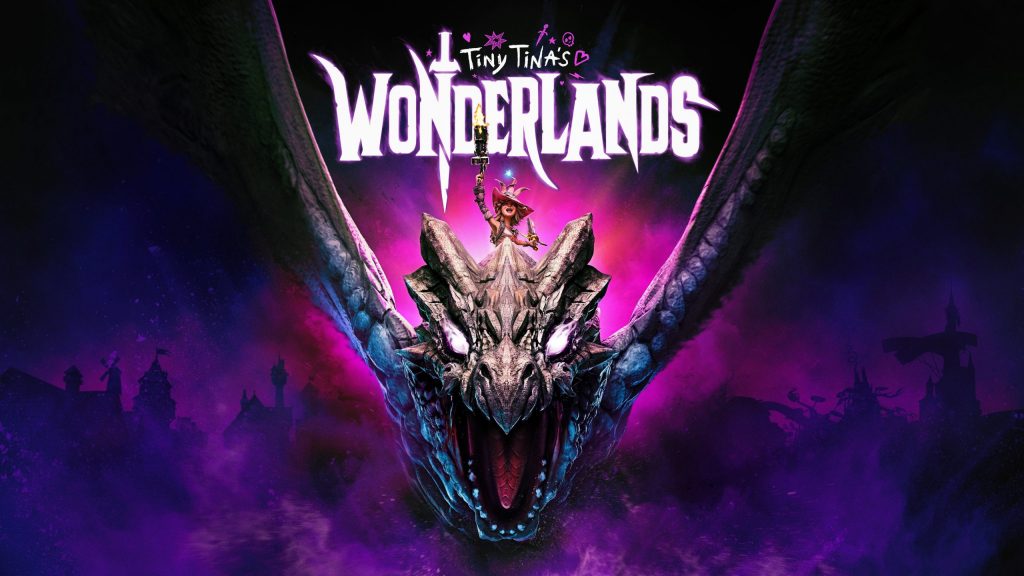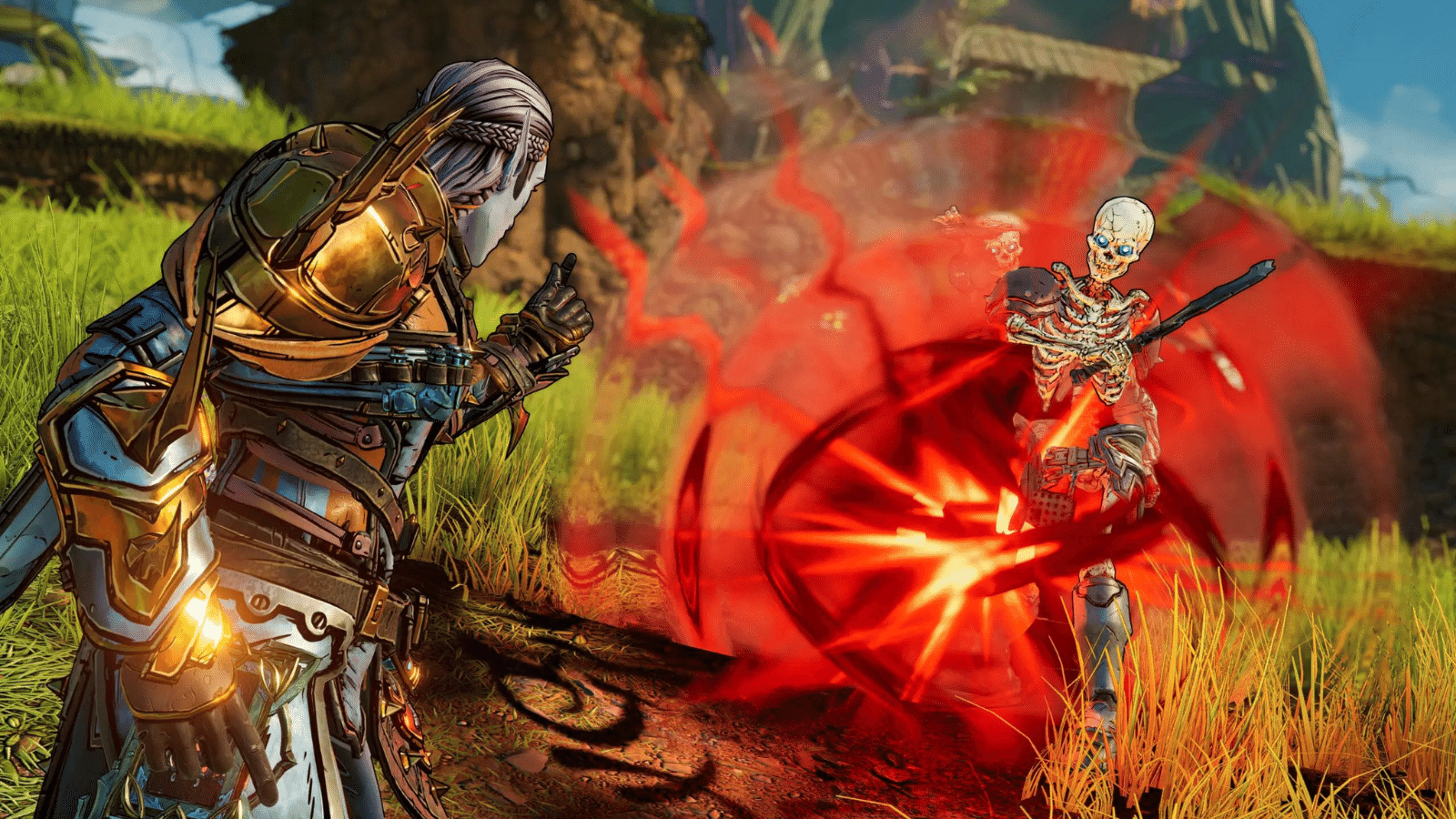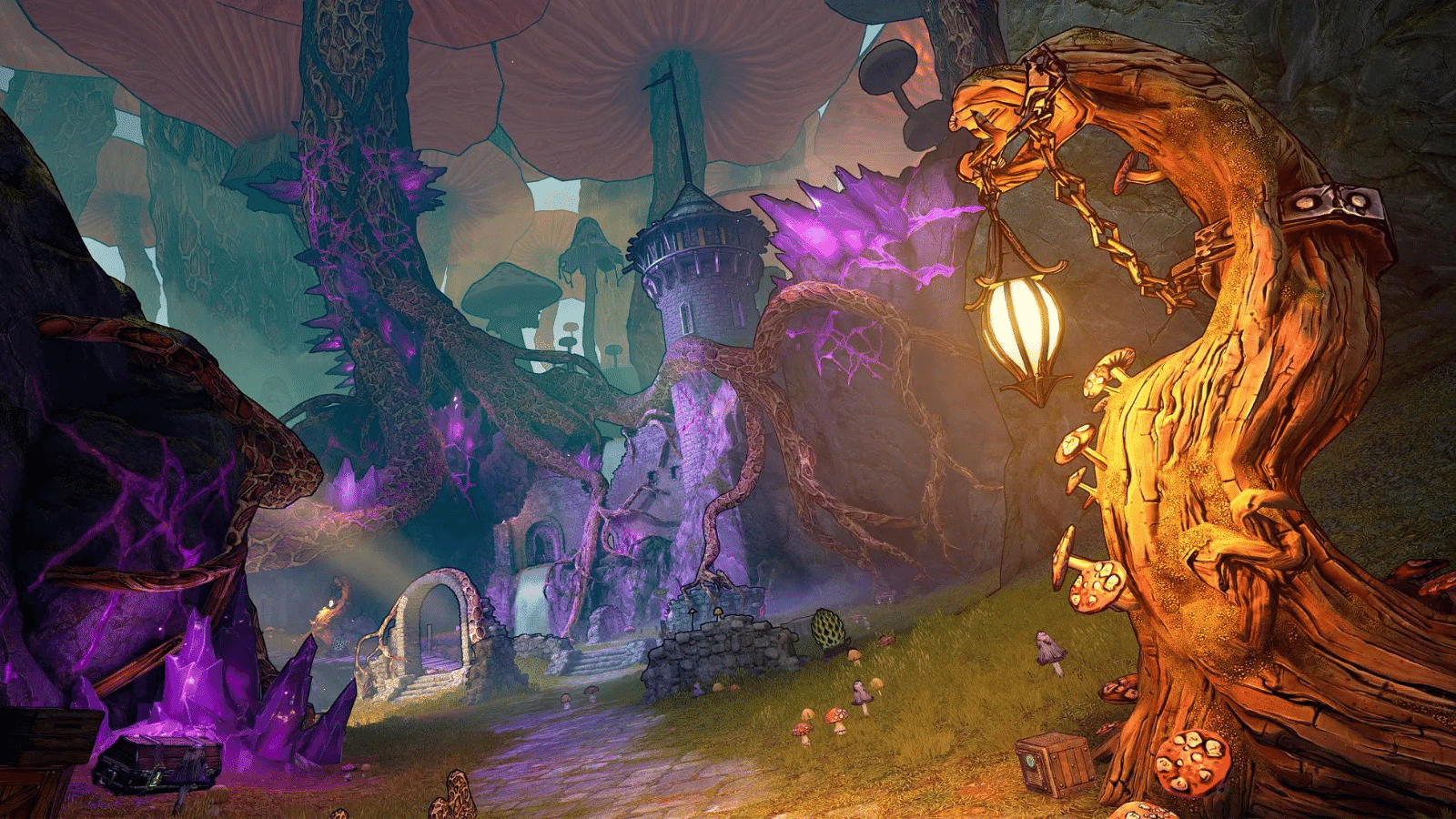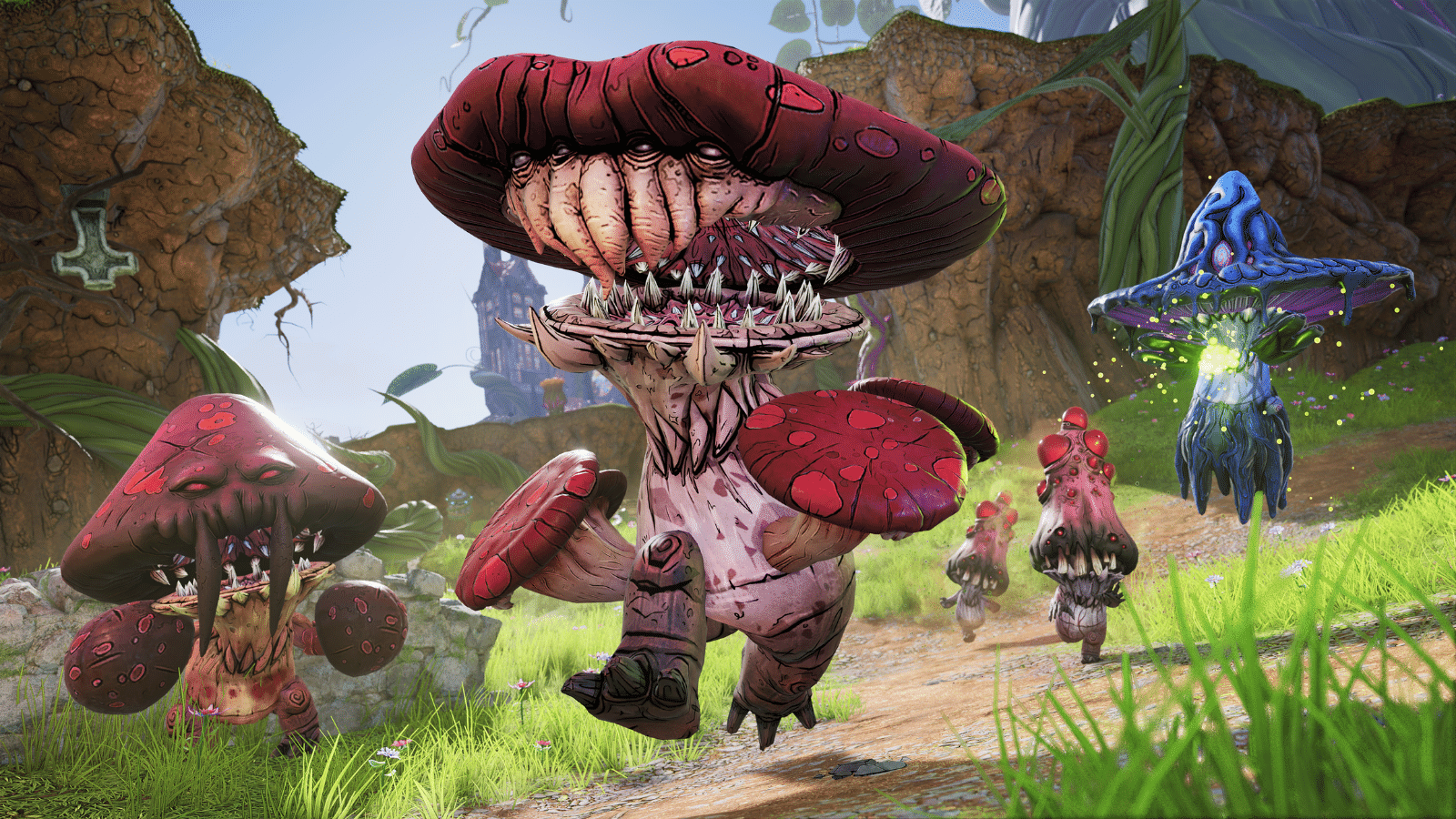Tiny Tina's Wonderlands certainly owes a lot to Borderlands but it's much better than it in many ways. It has many, many dark moments but the setting isn't quite as depressing as the wasteland inhabited by Moxxy and Handsome Jack was. The only downside? Claptrap is still there, and he's still annoying. And positively lethal to other NPCs, for some reason.
-
Visuals
-
Gameplay
-
Replayability
-
Story
-
Variety
On the one hand, Tiny Tina’s Wonderlands, a game by the studio that bought us Borderlands, is an allegorical take on the inner workings and insecurities of longtime character, Tiny Tina. On the other hand, it’s about traipsing through a wacky world populated by strange characters and even stranger missions. So… exactly like Borderlands, then?
Well… yes, and no. The game’s systems are familiar to anyone who has played anything in the series. As far as DNA goes, there’s far more Borderlands 2 than Borderlands 3 in this one. That’s one thing to be thankful for. But it’s more than just a spinoff of Tiny Tina’s Assault on Dragon’s Keep (which is now a standalone game). The single best piece of DLC ever released in the series, the sequel Wonderlands is an excellent return to Bunkers and Badasses.
A few familiar faces
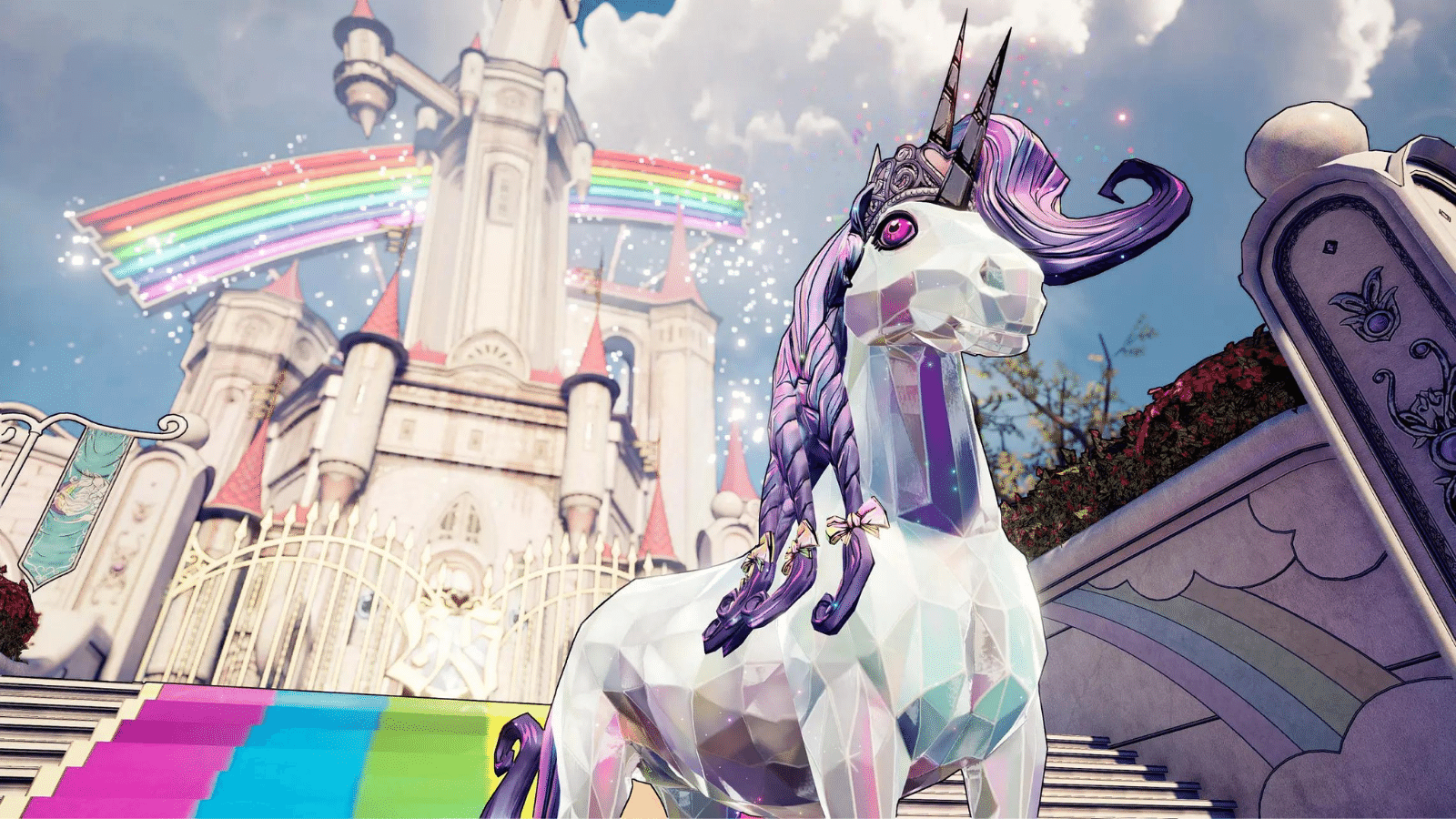 Throughout most of Wonderlands, players will find few really serious callbacks to previous Borderlands games. Tina’s there, as Bunker Master, and so is fan-favourite and all-around irritation, Claptrap, as a quest-giving NPC. Everyone else is strangely silent, with only hints of their existence in some item drops. It’s all about the fantasy, baby. But it’s also got an undercurrent of darkness running beneath its sparkly and fantastic exterior. There’s the Dragon Lord, an interfering antagonist who seems to conceal some secret of Tina’s.
Throughout most of Wonderlands, players will find few really serious callbacks to previous Borderlands games. Tina’s there, as Bunker Master, and so is fan-favourite and all-around irritation, Claptrap, as a quest-giving NPC. Everyone else is strangely silent, with only hints of their existence in some item drops. It’s all about the fantasy, baby. But it’s also got an undercurrent of darkness running beneath its sparkly and fantastic exterior. There’s the Dragon Lord, an interfering antagonist who seems to conceal some secret of Tina’s.
There’s also a new pair of characters joining players in Wonderlands. Valentine is voiced by Andy Samberg doing his very best Nolan North impersonation, and the robot Frette is voiced by comedy legend Wanda Sykes. Both provide overworld commentary along with Tina. The plot is… variable. There’s a major arc, to do with the Dragon Lord and Queen Butt Stallion (the diamond horse pictured above). But there are several smaller arcs to play with too. Claptrap provides most of the more annoying ones, but there are constant quests featuring all manner of unusual characters asking for help. As is common with a game based in the Borderlands, results vary. Or explode.
Magic missiles
Gameplay is nearly identical to that other shooter we’ve mentioned too many times already. But the weapons and skills have been effectively turned into a magical combat system. Players can equip a single spell (which used to be a grenade). Summon fireballs, meteors, volcanic eruptions, buffs, or just birds that’ll hit targets with elemental attacks. Melee attacks have been given a weapon slot and have a much greater efficacy this time around. It’s possible to one-shot enemies with the right character build.
Gun combat has considerably more variety in Wonderlands. This is because some weapons spew arrows, others spit elemental attacks, and some even fire plain old boring bullets. New weapon skins and reload animations let the whole interface feel fresh, but developer Gearbox really mixes things up with the new class and armour system.
Players choose a class at the outset, loosely amalgamated from previous Borderlands games and actual Dungeons and Dragons classes. Suitably humourous origin bonuses (your typical meat-shield is classed as Thicc, and starts with lowered intelligence) throw a spanner or two into class builds. And then there are the armour sets. Players start with the familiar rechargeable shield, now called a Ward. But over time, they’ll unlock rings, armour, amulets, and other extras that buff or enhance gameplay. At a certain point, players can multiclass. This brings a second skill tree into the mix, using one of the original starting class options to create something wholly new. It’s… wonderfully detailed. It’s also absolutely the best character upgrade system Gearbox has ever devised.
Both hands and a map
The way the game handles exploration is also noteworthy. There are extensive and varied play areas where quests are pursued, but they’re separated by an Overworld map. This map has its own quests, has the potential for random encounters (using the Pokémon method of hiding enemies in long grass), and is utterly charming to explore. Some of the optional content in this area proves to be handy for later exploration, as they give the player access to new skills. Some of these missions must be completed to progress, others are just zany distractions.
Others still involve completing shrines, which offer players permanent gameplay bonuses. These are based on the skills that Hero Points are used to upgrade — Strength, Dexterity, Intelligence, and so on. But there’s also another upgrade to explore. There are D20s, twenty-sided dies, hidden everywhere. Every time players locate one, their Luck — or ability to secure rare drops — goes up. Some of these are fiendishly well-hidden, others just kind of turn up as you’re playing. And then there’s even a locked mode, similar to Borderlands‘ Badass ranks, that opens up when players hit the level 40 cap.
Tiny Tina’s Wonderlands Verdict
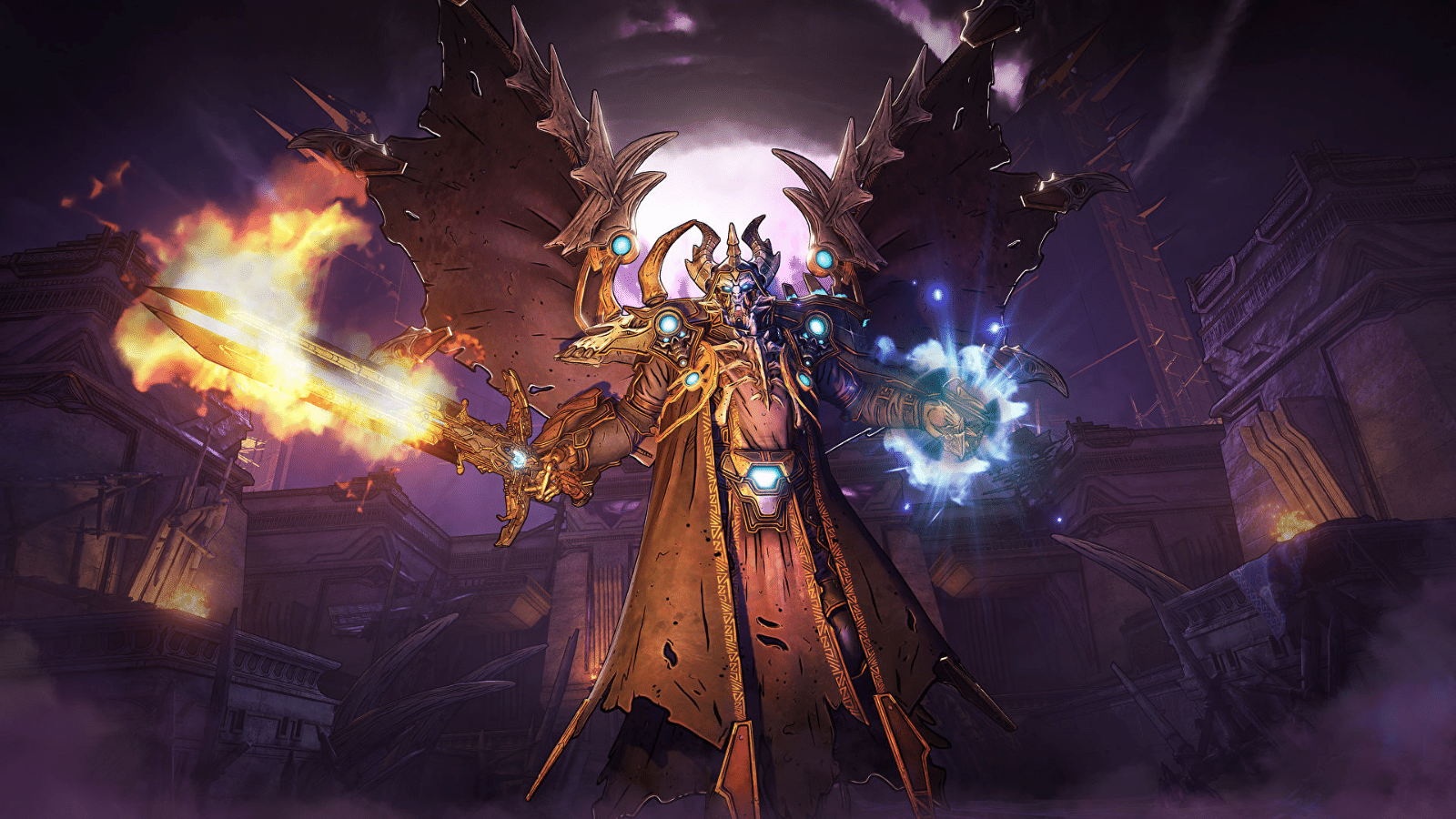 If you’re planning on romping around a humourous, dangerous, and entirely entertaining setting, either alone or with a bunch of mates, then Tiny Tina’s Wonderlands is the place for you. It’s fairly low-stakes, for the most part. You won’t feel overly challenged unless you’re cranking the difficulty settings or intentionally hamstringing yourself, but it’s a fun place to go to switch your brain off, watch numbers go up, and, every now and again, go “What the actual fu…”
If you’re planning on romping around a humourous, dangerous, and entirely entertaining setting, either alone or with a bunch of mates, then Tiny Tina’s Wonderlands is the place for you. It’s fairly low-stakes, for the most part. You won’t feel overly challenged unless you’re cranking the difficulty settings or intentionally hamstringing yourself, but it’s a fun place to go to switch your brain off, watch numbers go up, and, every now and again, go “What the actual fu…”

